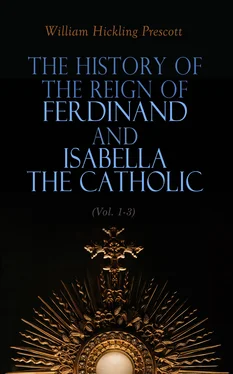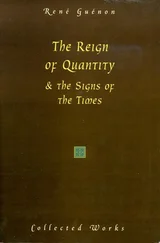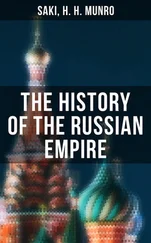[31] Ferreras, Hist. d'Espagne, tom. vii. pp. 487, 488.
[32] Carbajal, Anales, MS., año 80.—Pulgar, Reyes Católicos, part. 2, cap. 100.
[33] For example, at the great cortes of Toledo, in 1480, it does not appear that any of the nobility were summoned, except those in immediate attendance on the court, until the measure for the resumption of the grants, which so nearly affected that body, was brought before the legislature.
[34] Conde gives the following account of these chivalric associations among the Spanish Arabs, which, as far as I know, have hitherto escaped the notice of European historians. "The Moslem fronteros professed great austerity in their lives, which they consecrated to perpetual war, and bound themselves by a solemn vow to defend the frontier against the incursions of the Christians. They were choice cavaliers, possessed of consummate patience, and enduring fatigue, and always prepared to die rather than desert their posts. It appears highly probable that the Moorish fraternities suggested the idea of those military orders so renowned for their valor in Spain and in Palestine, which rendered such essential services to Christendom; for both the institutions were established on similar principles." Conde, Historia de la Dominacion de los Arabes en España, (Madrid, 1820,) tom. i. p. 619, not.
[35] See the details, given by Mariana, of the overgrown possessions of the Templars in Castile at the period of their extinction, in the beginning of the fourteenth century. (Hist. de España, lib. 15, cap. 10.) The knights of the Temple and the Hospitallers seem to have acquired still greater power in Aragon, where one of the monarchs was so infatuated as to bequeath them his whole dominions—a bequest which, it may well be believed, was set aside by his high-spirited subjects. Zurita, Anales, lib. 1, cap. 52.
[36] The apparition of certain preternatural lights in a forest, discovered to a Galician peasant, in the beginning of the ninth century, the spot, in which was deposited a marble sepulchre containing the ashes of St. James. The miracle is reported with sufficient circumstantiality by Florez, (Historia Compostellana, lib. 1, cap. 2, apud España Sagrada, tom. xx.) and Ambrosio de Morales, (Corónica General de España, (Obras, Madrid, 1791–3,) lib. 9, cap. 7,) who establishes, to his own satisfaction, the advent of St. James into Spain. Mariana, with more skepticism than his brethren, doubts the genuineness of the body, as well as the visit of the Apostle, but like a good Jesuit concludes, "It is not expedient to disturb with such disputes the devotion of the people, so firmly settled as it is." (Lib. 7, cap. 10.) The tutelar saint of Spain continued to support his people by taking part with them in battle against the infidel down to a very late period. Caro de Torres mentions two engagements in which he cheered on the squadrons of Cortes and Pizarro, "with his sword flashing lightning in the eyes of the Indians." Ordenes Militares, fol. 5.
[37] Rades y Andrada, Las Tres Ordenes, fol. 3–15.—Caro de Torres, Ordenes Militares, fol. 2–8.—Garibay, Compendio, tom. ii. pp. 116–118.
[38] Rades y Andrada, Las Tres Ordenes, part. 2, fol. 3–9, 49.—Caro de Torres, Ordenes Militares, fol. 49, 50.—Garibay, Compendio, tom. ii. pp. 100–104.
[39] Rades y Andrada, Las Tres Ordenes, part. 3, fol. 1–6.—The knights of Alcantara wore a white mantle, embroidered with a green cross.
[40] Rades y Andrada, Las Tres Ordenes, part. 1, fol. 12–15, 43, 54, 61, 64, 66, 67; part. 2, fol. 11, 51; part. 3, fol. 42, 49, 50.—Caro de Torres, Ordenes Militares, passim.—L. Marineo, Cosas Memorables, fol. 33.—Garibay, Compendio, lib. 11, cap. 13.—Zurita, Anales, tom. v. lib. 1, cap. 19.—Oviedo, Quincuagenas, MS., bat. 1, quinc. 2, dial. 1.
[41] Caro de Torres, Ordenes Militares, fol. 46, 74, 83.—Pulgar, Reyes Católicos, part. 2, cap. 64.—Rades y Andrada, Las Tres Ordenes, part. 1, fol. 69, 70; part. 2, fol. 82, 83; part. 3, fol. 54.—Oviedo, Quincuagenas, MS., bat. 1, quinc. 2, dial. 1.—The sovereigns gave great offence to the jealous grandees who were competitors for the mastership of St. James, by conferring that dignity on Alonso de Cardenas, with their usual policy of making merit rather than birth the standard of preferment.
[42] Caro de Torres, Ordenes Militares, fol. 84.—Riol has given a full account of the constitution of this council, Informe, apud Semanario Erudito, tom. iii. pp. 164 et seq.
[43] The reader will find a view of the condition and general resources of the military orders as existing in the present century in Spain, in Laborde, Itinéraire Descriptif de l'Espagne, (2d edition, Paris, 1827–30,) tom. v. pp. 102–117.
[44] Most readers are acquainted with the curious story, related by Robertson, of the ordeal to which the Romish and Muzarabic rituals were subjected, in the reign of Alfonso VI., and the ascendency which the combination of king-craft and priest-craft succeeded in securing to the former in opposition to the will of the nation. Cardinal Ximenes afterwards established a magnificent chapel in the cathedral church of Toledo for the performance of the Muzarabic services, which have continued to be retained there to the present time. Fléchier, Histoire du Cardinal Ximinès, (Paris, 1693,) p. 142.—Bourgoanne, Travels in Spain, Eng. trans., vol. iii. chap. 1.
[45] Marina, Ensayo Histórico-Crítico, nos. 322, 334, 341.—Riol, Informe, apud Semanario Erudito, pp. 92 et seq.
[46] Marina, Ensayo Histórico-Crítico, nos. 335–337.—Ordenanças Reales, lib. 1, tit. 3, leyes 19, 20; lib. 2, tit. 7, ley 2; lib. 3, tit. 1, ley 6.—Riol, Informe, apud Semanario Erudito, loc. cit.—In the latter part of Henry IV.'s reign, a papal bull had been granted against the provision of foreigners to benefices. Mariana, Hist. de España, tom. vii. p. 196, ed Valencia.
[47] Riol, in his account of this celebrated concordat, refers to the original instrument, as existing in his time in the archives of Simancas, Semanario Erudito, tom. iii. p. 95.
[48] "Lo que es público hoy en España é notorio," says Gonzalo de Oviedo, "nunca los Reyes Cathólicos desearon ni procuraron sino que proveer é presentar para las dignidades de la Iglesia hombres capazes é idoneos para la buena administracion del servicio del culto divino, é á la buena enseñanza é utilidad de los Christianos sus vasallos; y entre todos los varones de sus Reynos así por largo conoscimiento como per larga é secreta informacion acordaron encojer é elegir," etc. Quincuagenas, MS., dial. de Talavera.
[49] Salazar de Mendoza, Crón. del Gran Cardenal, lib. 1, cap. 52.—Idem, Dignidades de Castilla, p. 374.—Pulgar, Reyes Católicos, part. 2, cap. 104.—See also the similar independent conduct pursued by Ferdinand, three years previous, with reference to the see of Taraçona, related by Zurita, Anales, tom. iv. fol. 304.
[50] Bernaldez, Reyes Católicos, MS., cap. 44.—See a letter from one of Henry's subjects, cited by Saez, Monedas de Enrique IV., p. 3.—Also the coarse satire (composed in Henry's reign) of Mingo Revulgo, especially coplas 24–27.
[51] Pragmáticas del Reyno, fol. 64.—Ordenanças Reales, lib. 4, tit. 4, ley 22; lib. 5, tit. 8, ley 2; lib. 6, tit. 9, ley 49; lib. 6, tit. 10, ley 13.—See also other wholesome laws for the encouragement of commerce and general security of property, as that respecting contracts, (lib. 5, tit. 8, ley 5,)—fraudulent tradesmen, (lib. 5, tit. 8, ley 5,)—purveyance, (lib. 6, tit. 11, ley 2 et al.—Recopilacion de las Leyes, lib. 5, tit. 20, 21, 22; lib. 6, tit. 18, ley 1.—Pulgar, Reyes Católicos, part. 2, cap. 99.—Zurita, Anales, tom. iv. fol. 312.—Mem. de la Acad. de Hist., tom. vi. Ilust. 11.)—The revenue, it appears, in 1477, amounted to 27,415,228 maravedies; and in the year 1482, we find it increased to 150,695,288 maravedies. (Ibid., Ilust. 5.)—A survey of the kingdom was made between the years 1477 and 1479, for the purpose of ascertaining the value of the royal rents, which formed the basis of the economical regulations adopted by the cortes of Toledo. Although this survey was conducted on no uniform plan, yet, according to Señor Clemencin, it exhibits such a variety of important details respecting the resources and population of the country, that it must materially contribute towards an exact history of this period. The compilation, which consists of twelve folio volumes in manuscript, is deposited in the archives of Simancas.
Читать дальше












